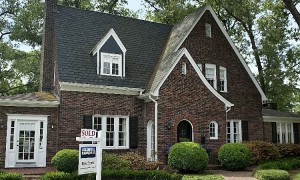Homeowners, real estate investors, and local organizations may participate in rehabbing homes — and their reasons for doing so can vary. Some homeowners may choose to rehabilitate a home because they’re restoring a historic building, while others may choose to rehabilitate a home in an older part of the Metroplex in order to live close to downtown areas. Current homeowners who require public assistance may request grants from government programs or organizations to rehabilitate a home in need of major repairs. In some cases, rehabbing homes is done by organizations to revitalize certain areas or provide affordable housing. Real estate investors and “flippers” might choose to purchase a neglected property to restore it and turn a profit. Here are some of the common elements involved in rehabbing homes you should familiarize yourself with if you’re planning to buy a home in the Dallas-Fort Worth area.
When Should You Rehab a Home?
Rehabbing homes can involve cosmetic improvements, such as painting and interior updating, along with more substantial work on the electrical and structural components of a home. Older homes may require updated wiring and plumbing systems to meet city codes. The scope of a rehabilitation project largely depends on the state a home is currently in and its age. It’s not uncommon for homes in areas such as Oak Cliff or historic Fort Worth to undergo rehabilitation after decades of neglect or vacancy.
The Inspection Process: Whether you’re an investor or a potential homeowner, an inspection is extremely important for determining the scope of a rehabilitation project. While a home that requires improvements may be priced lower, buyers should factor in the cost of repairs and the current market value of turn-key homes in the decision making process. Real estate blog Bigger Pockets stresses that looks can be deceiving: “A shabby looking house with no structural problems has more value than a neat-looking one with structural problems.”
Other Factors to Consider: When determining whether a home is a good candidate for rehabilitation, there are a few factors to consider beyond the condition of the home. Bigger Pockets recommends that those searching for homes to rehabilitate or flip should look at the following factors:
- Location of the property.
- The home’s neighboring amenities, such as good schools, parks, and areas of employment.
How Do You Pay for Rehabbing Homes?
Some current homeowners may be eligible for funds from the US Department of Housing and Urban Development for rehabilitating homes. These funds can help repair damage to roofing, plumbing, electrical, and wear and tear on properties. There are also local resources for rehabbing homes. For example, the city of Plano, a suburb of Dallas, offers housing rehabilitation assistance for owner-occupied housing.
Choosing to rehabilitate a home is a big decision that could require a great deal of time and energy, as well as assistance from licensed professionals such as plumbers, carpenters, and electricians. Before you set out on a home-rehabilitation project, it’s best to seek counsel from real estate agents and home inspectors first.
[cf]skyword_tracking_tag[/cf]







[…] post Rehabbing Homes in DFW: The Basics appeared first on Coldwell Banker Blue […]
[…] Image …read more […]
[…] Rehabbing Homes in DFW: The Basics […]
Solid article! I have worked on many historic renovations. The owners or potential buyers need to take into considerations the items mentioned above and weigh them against the intangible value of owning a piece of history.
.
tnx for info!